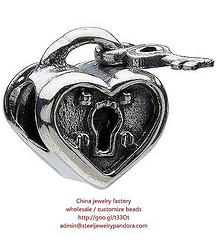
A Short History of the Charm Bracelet
Believe it or not, charms have been worn for thousands of years, beginning with prehistory. A nomad may have found uncommon stones or intricately shaped shells and rocks and collected them for luck. Some prehistoric men wore jewelry made from bones, shells, and rocks not just for adornment, but for protection from evil spirits as well. The term “charms” comes from the idea that these trinkets could ward off bad luck or evil.
Charms have also been used for identification of tribal or religious affiliates. They have been worn as symbols of power. Perhaps they have even served as a sort of bragging right when hunters wore the teeth or bones of their conquests.
During the Bronze Age, around 3000 B.C, jewelry began to be made by skilled craftsmen. People began to wear jewelry made of precious metals and gems. Egyptians are known for their exquisite jewelry. They began wearing charms around this same time period. They believed that the charms they wore would help the gods identify and guide them in the afterlife.
With the advent of the Roman Empire, Christians began to wear fish charms to identify themselves and their religious beliefs. This is how Christians would know recognize one other. Jewish people would wear charms inscribed with tiny passages of Jewish law.
During the Middle Ages, knights and nobles wore charms that showed their family origins and professions. Status was extremely important, and these charms would have been too expensive for most commoners to afford. The Industrial Revolution, however brought about the mass production of jewelry, which made charms more easily attainable.
Queen Victoria turned charm wearing from a symbol of power and identification into a fashionable trend in the early 20th century. European nobles began wearing them as well, and each charm was indicative of some aspect of that person’s life. Some wore lockets containing tiny portraits or even locks of hair, which was extremely popular during this time period.
In America, soldiers during World War II brought the trend home with them when returning from war. They wanted their loved ones to have trinkets from the countries they had fought in. Charm bracelets became wildly popular in the mid 20th century, and have come in and out of fashion in different styles ever since.
When you wear a charm bracelet, you’re not just wearing your own history. You are continuing a tradition that has been around since the dawn of man.
About the Author
http://www.charmjunction.com is Canada’s only authorized online dealer of Pandora jewelry and Pandora charms. Buy your Pandora jewelry charms online at http://www.charmjunction.com
.